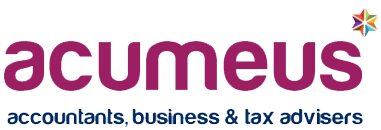As we navigate the evolving landscape of capital allowances, it’s crucial for businesses to understand the nuances between two significant tax relief options: Full Expensing and the Annual Investment Allowance (AIA). The government introduced Full Expensing in Spring 2023 and made it permanent in Autumn 2023. This new option might lead some companies to forget about the older Annual Investment Allowance (AIA). However, a closer examination reveals that the AIA still holds considerable value in certain scenarios.
Understanding Full Expensing
Full Expensing, the newcomer to the capital allowances arena, offers a compelling proposition: a 100% first-year capital allowance for qualifying main pool expenditure and a 50% first-year allowance for special rate pool expenditure (e.g. integral features). This uncapped relief applies to expenditure incurred from 1 April 2023 onwards, making it a key consideration for companies preparing their 2023 or 2024 corporation tax returns.
The Enduring Value of the Annual Investment Allowance
While Full Expensing may seem like the default choice going forward, it’s important not to discount the AIA. Introduced in 2008, AIA has been a reliable and important part of capital allowances, providing 100% relief on most plant and machinery up to a generous limit of £1 million per group (increased from £200,000 in 2019).
Key Considerations: Why AIA May Still Be Preferable
There are two primary reasons why claiming the AIA might be more advantageous than opting for Full Expensing:
- Treatment of Special Rate Pool Assets: The AIA offers 100% relief in the year of expenditure for Special Rate Pool assets. In contrast, Full Expensing provides only 50% relief in the first year, with the balance added to the Special Rate Pool, subject to Writing Down Allowances at a mere 6% per annum.
- Handling of Asset Disposals: When disposing of plant and machinery for which Full Expensing has been claimed, companies face an immediate balancing charge based on the proceeds received. This is not the case with assets acquired using the AIA, potentially leading to significant tax timing differences.
A Practical Example: Cooper Farms Ltd
To illustrate these differences, let’s consider a scenario involving Cooper Farms Ltd. The company, with an existing capital allowances main pool balance of £500,000, acquires a new tractor for £150,000 and sells it the following year for £100,000.
Under Full Expensing:
- Year 1: £150,000 relief
- Year 2: £100,000 balancing charge
- Net relief: £50,000
Under AIA:
- Year 1: £150,000 relief
- Year 2: No balancing charge, £100,000 deducted from the main pool
- Net relief: £132,000 (£150,000 minus £18,000 in future writing down allowances)
In this example, claiming the AIA results in a tax timing benefit of £82,000 compared to Full Expensing.
Strategic Implications
While the difference between these approaches may ultimately be a matter of timing, the impact can be substantial, especially for companies with large brought-forward capital allowance pools. With writing down allowances applying at 18%, it can take several years for the initial advantage of the AIA to unwind.
Conclusion
As we adapt to the new landscape of capital allowances, it’s crucial not to overlook the continued relevance of the AIA. While Full Expensing offers simplicity and uncapped relief, the AIA may prove more beneficial in many scenarios, particularly when considering the disposal of assets and the treatment of Special Rate Pool items.
We recommend a careful evaluation of your company’s specific circumstances and future plans before deciding between Full Expensing and the AIA. As always, consulting with a tax advisor can help ensure you’re making the most strategic choice for your business’s unique situation.
Do you need help? Get in touch with our experienced tax team today. Please click here to book a consultation.
Disclaimer: This blog is accurate as of the publication date and is intended for general informational purposes only. It does not constitute legal or professional advice. Please seek independent professional advice.

